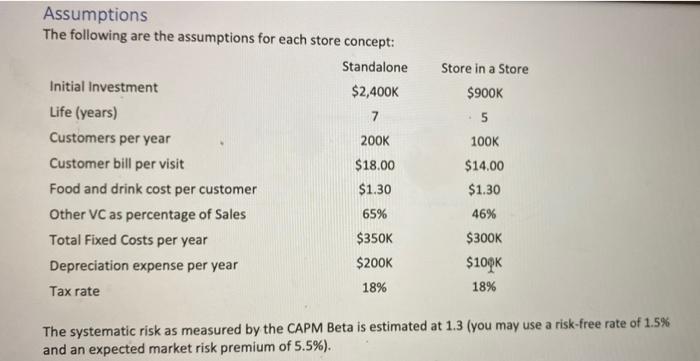Answered step by step
Verified Expert Solution
Question
1 Approved Answer
5. Suppose the management team consider the number of customers per year for the stand-alone store concept as the most uncertain of the inputs into
5. Suppose the management team consider the number of customers per year for the stand-alone store concept as the most uncertain of the inputs into the models (the customer traffic in the store-in-store concept is fairly predictable as the store goes inside an existing mall (pre-COVID) or other larger store thus, the customer traffic can be estimated with precision)
The value of 200K customers per year given earlier for the average annual customers in the stand-alone store concept is the EXPECTED value the actual number of customers per year are actually distributed according
to a normal distribution, with mean 200K and standard deviation of 10K customers.
a. Using a simulation of 10,000, create a histogram of the standalone stores NPV.
b. Show the mean value of NPV across the 10,000 simulations
c. Based on this simulation, what is the estimated probability that any particular store standalone store will see a realized NPV of zero or below in other words, what is the chance we invest in a standalone store, and it turns into a failure?


Step by Step Solution
There are 3 Steps involved in it
Step: 1

Get Instant Access to Expert-Tailored Solutions
See step-by-step solutions with expert insights and AI powered tools for academic success
Step: 2

Step: 3

Ace Your Homework with AI
Get the answers you need in no time with our AI-driven, step-by-step assistance
Get Started


